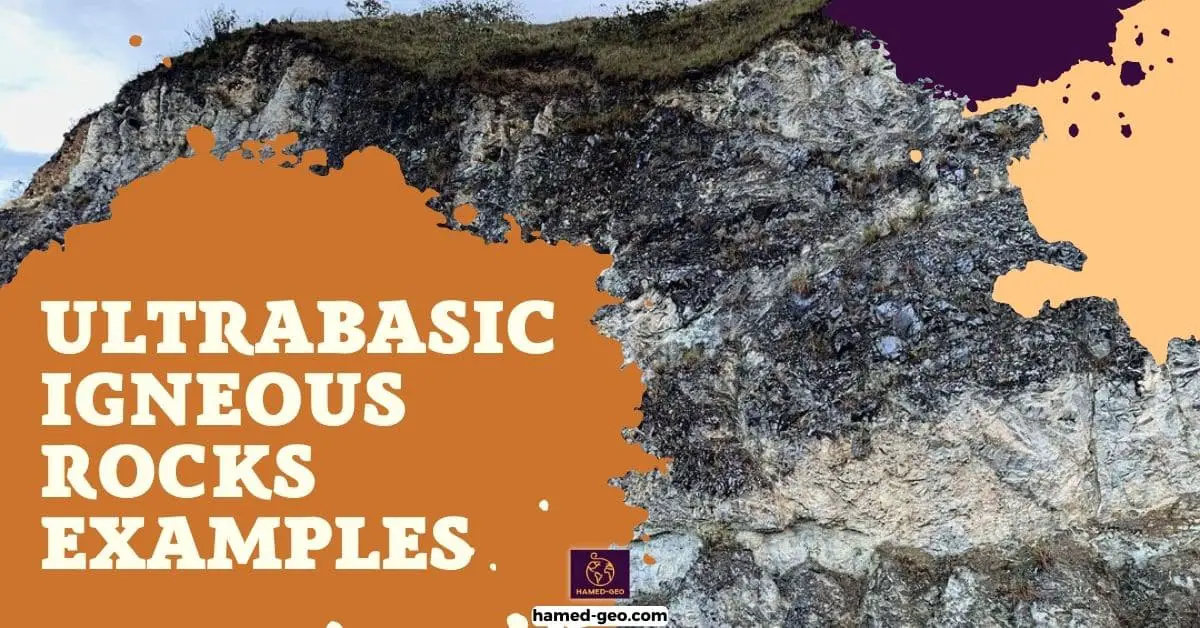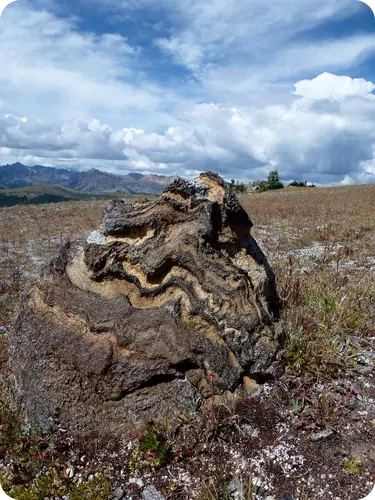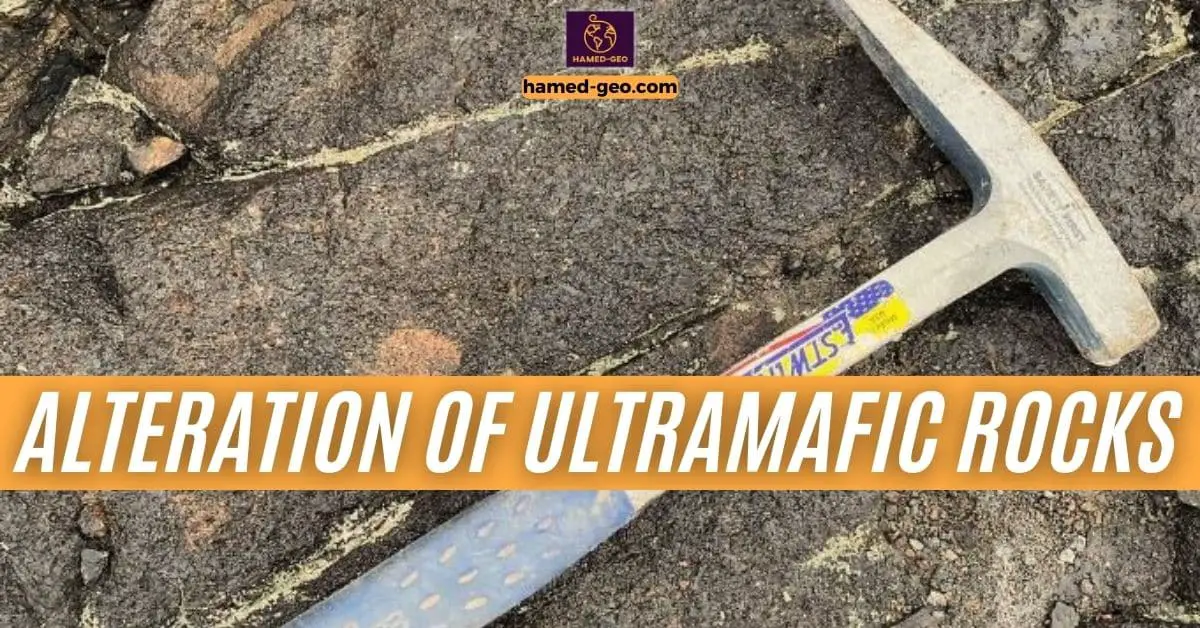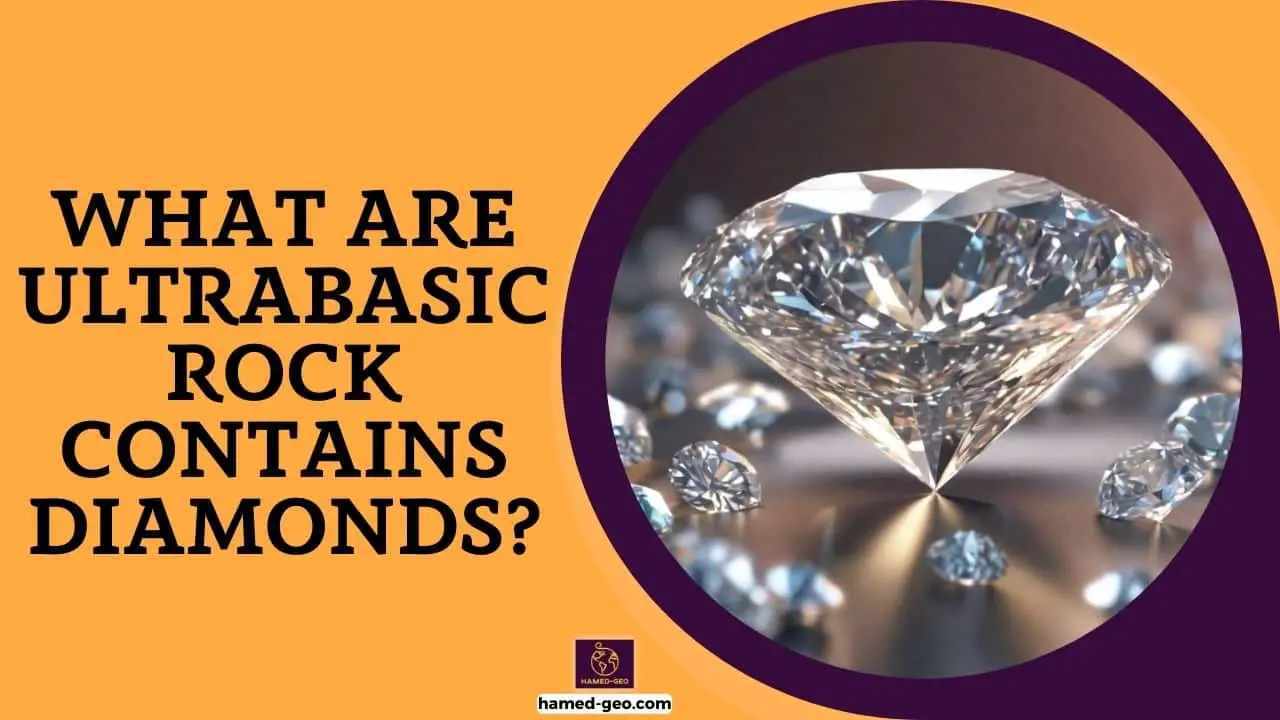Ultrabasic igneous rocks are a group of rocks that have a low silica content and high levels of iron and magnesium. These rocks are characterized by their dark color and dense composition. Ultrabasic igneous rocks are formed from magma that has a very low viscosity, allowing it to flow easily and fill in gaps in the Earth’s crust. This type of rock is typically found in areas of volcanic activity, such as mid-ocean ridges and hotspots.
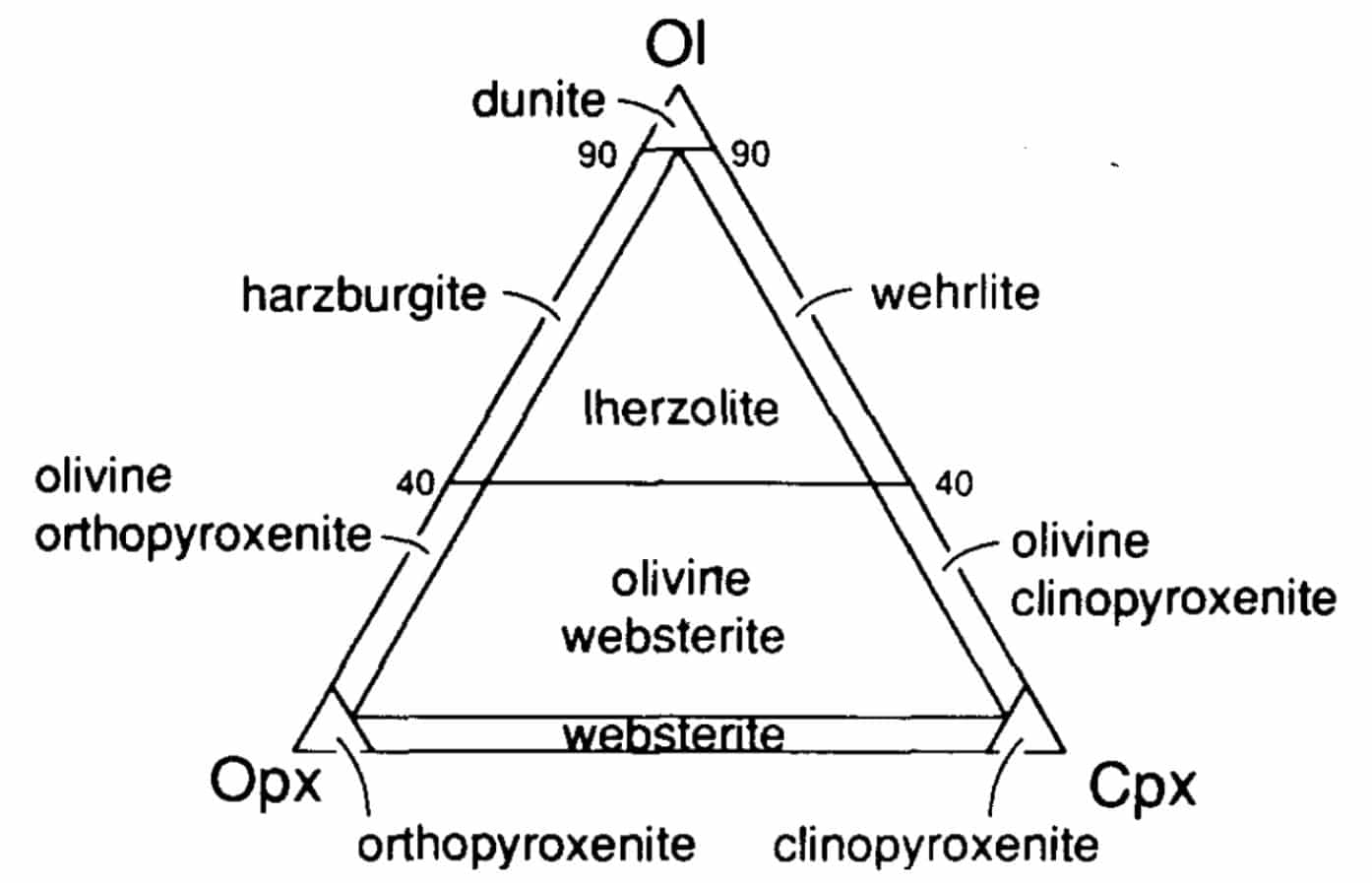
In this article, we’re going to talk about different ultrabasic igneous rocks examples.
Harzburgite
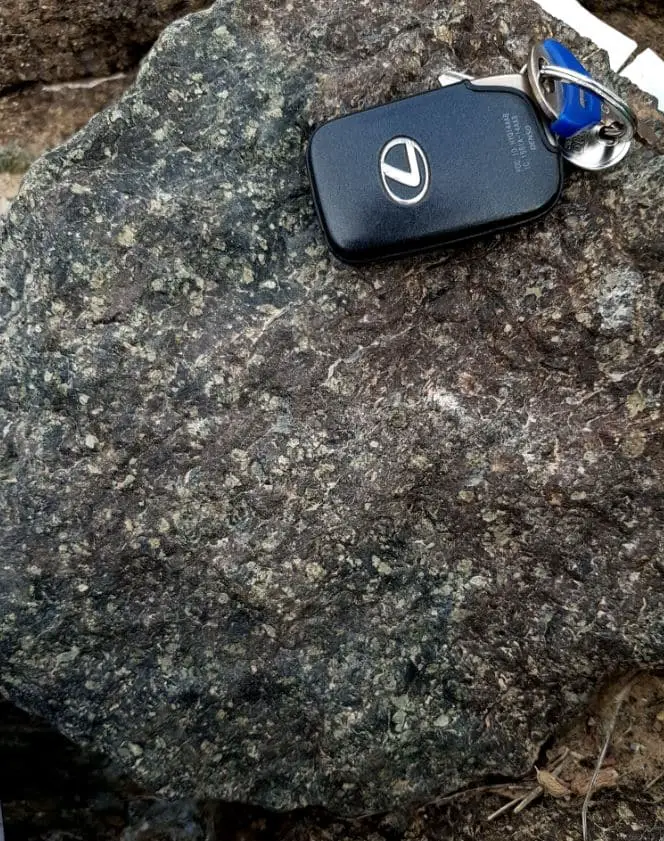
Harzburgite is a type of ultramafic rock that is predominantly composed of the minerals olivine and orthopyroxene. It is derived from the Earth’s mantle and is commonly found in ophiolite complexes, which are sections of oceanic lithosphere that have been obducted onto continental crust. Harzburgite is significant in the study of geology and earth sciences because it provides valuable insights into the composition and evolution of the Earth’s mantle.
The name harzburgite is derived from Harzburg, a town in Germany where this type of rock was first described. It is typically coarse-grained and has a greenish-gray to dark-green color. The dominant mineral, olivine, gives harzburgite its characteristic green hue. Orthopyroxene, another mineral present in harzburgite, appears as light-colored grains within the rock.
Harzburgite is formed under conditions of high temperature and pressure in the uppermost part of the Earth’s mantle. It is believed to originate from the peridotite layer, which is the main constituent of the upper mantle. Harzburgite is commonly found in association with other ultramafic rocks such as dunite and lherzolite. These rocks collectively make up a significant portion of the Earth’s mantle.
The study of harzburgite provides valuable information about the composition and dynamics of the Earth’s mantle. By analyzing the mineralogy and chemistry of harzburgite samples, scientists can gain insights into the processes that occur deep within the Earth. Harzburgite is especially important in the study of mantle melting and the formation of magma, as it represents a residue that is left behind after the partial melting of the mantle. Understanding the mineralogical and geochemical characteristics of harzburgite can help scientists unravel the complex processes that shape our planet.
In addition to its scientific significance, harzburgite also has practical applications. Its high content of olivine makes it a potential source of magnesium and other valuable minerals. Olivine is also used in the manufacture of refractory bricks, which are resistant to high temperatures and are used in various industrial processes. Furthermore, harzburgite has been found to be a suitable host rock for the storage of carbon dioxide, a greenhouse gas that contributes to climate change.
Peridotite
Peridotite, a coarse-grained igneous rock, is closely related to harzburgite. It is one of the main rock types found in the Earth’s mantle and is composed primarily of olivine, with lesser amounts of pyroxene and other minerals. Peridotite is known for its high density and is believed to be the main constituent of the Earth’s upper mantle. This rock type is often found in areas of tectonic activity, such as mid-ocean ridges and subduction zones.
Peridotite derives its name from the gemstone peridot, which is a type of olivine. The rock is typically dark green to brown in color and has a coarse texture due to its mineral composition. The presence of olivine gives peridotite its characteristic color, while the presence of pyroxene and other minerals contributes to its overall composition and properties.
The mineral composition of peridotite is an important factor in understanding its role in the Earth’s mantle. Olivine, the dominant mineral in peridotite, is a magnesium-iron silicate that is highly resistant to melting. This makes peridotite a refractory rock, meaning it has a high melting point and is difficult to melt. As a result, peridotite is believed to be a major component of the Earth’s upper mantle, which is predominantly solid and capable of transmitting seismic waves.
Peridotite is also significant in the study of plate tectonics and geodynamics. It is commonly found in areas of tectonic activity, such as mid-ocean ridges and subduction zones, where the Earth’s lithospheric plates are interacting. The presence of peridotite in these regions provides insights into the processes occurring beneath the Earth’s surface, including the formation of new crust at mid-ocean ridges and the recycling of old crust at subduction zones.
Dunite
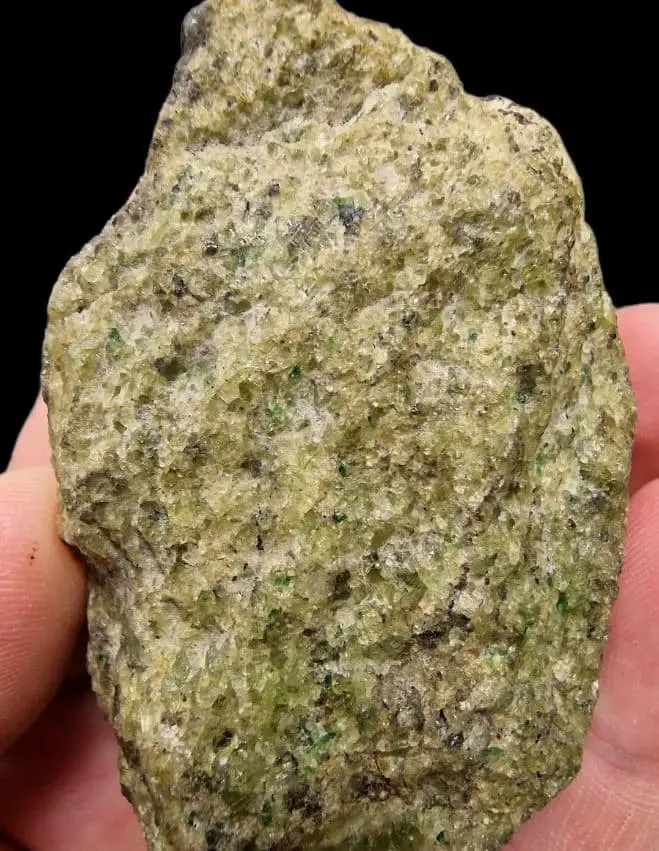
Peridotite is a coarse-grained igneous rock that is primarily composed of the minerals olivine and pyroxene. It is an important rock type in the Earth’s mantle and is often brought to the surface through geological processes such as tectonic uplift and erosion. One of the major variations of peridotite is dunite.
Dunite is a type of peridotite that is almost exclusively made up of the mineral olivine, with very little or no pyroxene present. It is characterized by its light green color and its high density. Dunite is often found in layered intrusions, where it forms in the lower parts of magma chambers due to the crystallization of olivine-rich magmas. These magmas are typically derived from the mantle, and their ascent to the surface can be accompanied by the formation of dunite.
One of the most significant features of dunite is its strong association with the formation of chromite deposits. Chromite is a mineral that contains the element chromium and is an important source of this metal. The presence of dunite in layered intrusions is often an indication that chromite deposits may be present in the same area. This is because, during the crystallization of dunite, the mineral olivine tends to concentrate chromium, leading to the formation of chromite. As a result, dunite is considered an important exploration target for chromite deposits.
In addition to its association with chromite, dunite also has industrial applications. Due to its high melting point and resistance to heat and corrosion, it is used in the production of refractory bricks, which are used in the lining of furnaces and kilns. Dunite can also be crushed and used as an abrasive in sandpaper and grinding wheels. Furthermore, its high density makes it useful as a ballast material in ships and as a component in concrete for radiation shielding.
Komatiite
Continuing the discussion of ultramafic rocks, the subsequent section focuses on komatiite. Komatiite is an extremely rare and ancient type of volcanic rock that was formed during the Archean eon, approximately 2.7 to 2.9 billion years ago. This rock has distinctive characteristics that set it apart from other types of volcanic rocks, making it of great interest to geologists and researchers.
Komatiite derives its name from the Komati River in South Africa, where it was first discovered. The rock is primarily composed of olivine crystals, with lesser amounts of pyroxene minerals. This unique mineral composition gives komatiite its distinct appearance, with a dark green to black color and a glassy or smooth texture. The high magnesium content of komatiite results in very low silica content, making it one of the most magnesium-rich rocks known.
One of the most fascinating aspects of komatiite is its volcanic origin and the extreme conditions under which it was formed. Komatiite lavas were erupted at temperatures ranging from approximately 1,400 to 1,600 degrees Celsius, making them some of the hottest lavas ever erupted on Earth. These high temperatures allowed the lavas to flow more easily and quickly, resulting in the characteristic thin and highly fluid lava flows associated with komatiite.
The unique geological conditions that led to the formation of komatiite are not fully understood, but they are believed to be associated with the early development of the Earth’s mantle. It is thought that the extreme heat and high mantle temperatures during the Archean eon allowed for the formation of komatiite lavas. However, due to the cooling of the Earth’s interior over time, komatiite eruptions ceased around 2.7 billion years ago and are no longer found on the Earth’s surface.
Despite its rarity, komatiite provides valuable insights into the Earth’s early history and the processes that shaped our planet. The study of komatiite has revealed important information about the composition and dynamics of the Archean mantle, as well as the conditions under which volcanic rocks were formed in the past. By analyzing the mineralogy and chemistry of komatiite samples, scientists can gain a better understanding of the Earth’s evolution and the processes that shaped our planet billions of years ago.
Lherzolite
In contrast to the ultramafic volcanic rocks known as komatiites, lherzolites are a type of ultramafic rock that is found in the Earth’s mantle. Lherzolites are primarily composed of the minerals olivine and pyroxene, with minor amounts of other minerals such as spinel and garnet. They are commonly associated with the process of partial melting in the mantle, and their presence provides important clues about the composition and dynamics of the Earth’s interior.
Lherzolites are often found in ophiolite complexes, which are sections of oceanic crust that have been uplifted and exposed on land due to tectonic processes. These complexes are formed at oceanic spreading centers where new crust is being created. As the oceanic lithosphere cools and thickens, it starts to sink back into the mantle through a process known as subduction. During subduction, pieces of the oceanic lithosphere can be incorporated into the overriding plate and eventually brought to the surface through tectonic forces.
The presence of lherzolites in ophiolite complexes provides valuable insights into the composition and structure of the Earth’s mantle. By studying the chemical and isotopic composition of the minerals in lherzolites, scientists can determine the temperature, pressure, and depth at which they were formed. This information can help us understand the processes that occur in the mantle, such as the movement and recycling of material through subduction zones.
In addition to their scientific significance, lherzolites also have economic importance. They are a potential source of valuable minerals such as platinum, palladium, and chromite. These minerals are often concentrated in small pockets or veins within the lherzolite, and their extraction can be challenging and costly. However, advances in mining technology and exploration techniques have made it possible to extract these minerals from lherzolites, contributing to the global supply of these valuable resources.
Pyroxenite
Pyroxenite is a type of ultramafic rock that is primarily composed of pyroxene minerals, specifically clinopyroxene, and orthopyroxene. It is formed through the crystallization of magma deep within the Earth’s mantle. Pyroxenite commonly occurs as intrusive rocks, meaning they form when magma solidifies underground. These rocks are often associated with other ultramafic rocks, such as peridotite and dunite.
One of the distinguishing features of pyroxenite is its high concentration of pyroxene minerals. These minerals give the rock a dark color and a coarse-grained texture. Pyroxenite can range in composition from being almost entirely composed of pyroxene minerals to containing significant amounts of other minerals, such as olivine and plagioclase feldspar.
Pyroxenite has a number of important geological implications. It is commonly found in areas associated with tectonic plate boundaries, such as ophiolite complexes and subduction zones. In these settings, pyroxenite is thought to play a role in the formation of certain types of igneous rocks, such as basalt and gabbro. Pyroxenite can also be an important source of valuable minerals, such as chromium and platinum-group elements, which have economic significance.
One of the critical applications of pyroxenite is in the study of the Earth’s mantle. By analyzing the composition and properties of pyroxenite, scientists can gain insights into the processes happening deep within the Earth. For example, the presence of pyroxenite in certain areas can provide evidence of past or present mantle melting and the ascent of magma towards the Earth’s surface. This information is crucial for understanding the dynamics of plate tectonics and the formation of igneous rocks.
Wehrlite
Pyroxenite, as discussed in the previous section, is a type of ultramafic rock composed mainly of pyroxene minerals. Now, let us delve into the topic of wehrlite, another rock that falls under the ultramafic category. Wehrlite is a coarse-grained igneous rock that is primarily composed of olivine and clinopyroxene, with minor amounts of orthopyroxene. This unique composition sets wehrlite apart from other ultramafic rocks such as peridotite and pyroxenite.
The name “wehrlite” is derived from the Austrian geologist, Franz Wehrle, who first described this rock in the late 19th century. Wehrlite is commonly found in ophiolite complexes, which are sections of oceanic lithosphere that have been thrust onto continental crust during tectonic processes. These complexes provide an excellent opportunity to study wehrlite, as they often contain a variety of ultramafic rocks. Wehrlite can also be found in other geological settings, such as xenoliths in volcanic rocks or inclusions within certain types of igneous intrusions.
One of the distinguishing features of wehrlite is its mineral composition. Olivine is usually the dominant mineral in wehrlite, making up around 40-90% of the rock’s volume. Clinopyroxene is the next most abundant mineral, typically comprising 10-60% of the rock. Orthopyroxene, although present in smaller amounts, is an important component that helps differentiate wehrlite from other ultramafic rocks. Other minerals that may occur in minor quantities include spinel, plagioclase feldspar, and amphibole.
Wehrlite is classified as a member of the peridotite family, which encompasses a range of ultramafic rocks. Its composition places it on the border between dunite, which is almost entirely composed of olivine, and clinopyroxenite, which is mainly comprised of clinopyroxene. This intermediate composition makes wehrlite a valuable rock for studying the processes involved in the formation of ultramafic rocks. By examining the mineral proportions and the presence of certain trace elements, geologists can gain insights into the melting, crystallization, and metamorphic events that occurred during the rock’s formation.
Kimberlite
Wehrlite, a unique rock formation known for its composition of olivine and clinopyroxene, piques the curiosity of geologists and scientists alike. However, another fascinating rock type that has captivated the attention of researchers and the general public is kimberlite. Kimberlite, a rare and valuable volcanic rock, not only holds geological significance but also plays a crucial role in the formation of diamonds. This subsequent section delves into the intriguing characteristics, formation process, and economic importance of kimberlite.
Kimberlite is an ultramafic rock that is primarily composed of olivine, phlogopite, and serpentine minerals, with varying amounts of other minerals such as garnet and clinopyroxene. It is typically rich in volatiles, including water, carbon dioxide, and sulfur, which contribute to its explosive nature during volcanic eruptions. Kimberlite is most commonly associated with diamond-bearing deposits, making it an essential rock in the search for these precious gemstones.
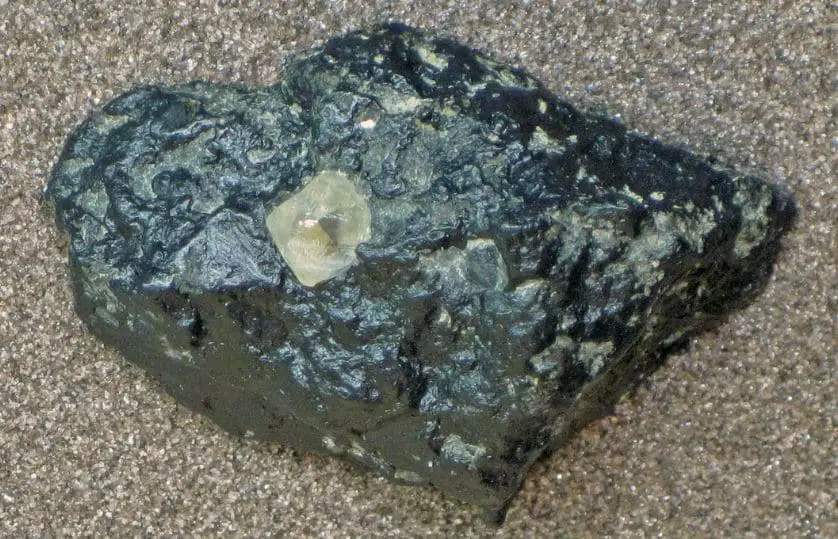
The formation of kimberlite is a complex process that occurs deep within the Earth’s mantle. It is believed that kimberlite originates from the asthenosphere, a mantle region below the lithosphere. The exact mechanisms of kimberlite formation are still under debate, but it is generally accepted that the presence of volatiles, particularly water, plays a crucial role. When a sudden drop in pressure occurs or when a plume of magma rises rapidly to the surface, the volatile-rich kimberlite magma is expelled explosively, forming a volcanic pipe.
These kimberlite pipes, also known as kimberlite diatremes, can extend several hundred meters in diameter and reach depths of several kilometers. The violent nature of kimberlite eruptions is responsible for the rapid ascent of material from the deep mantle to the Earth’s surface. This process allows diamonds, which are formed at extreme pressure and temperature conditions, to be transported to the Earth’s surface in a relatively short time span.
The economic importance of kimberlite lies in its association with diamond deposits. The presence of kimberlite pipes is a strong indicator of potential diamond-bearing regions. Mining companies often use geological mapping and geophysical surveys to identify and explore these kimberlite pipes. Once a kimberlite pipe is located, extensive drilling and sampling are conducted to assess the diamond content and economic viability of the deposit.
Carbonatite
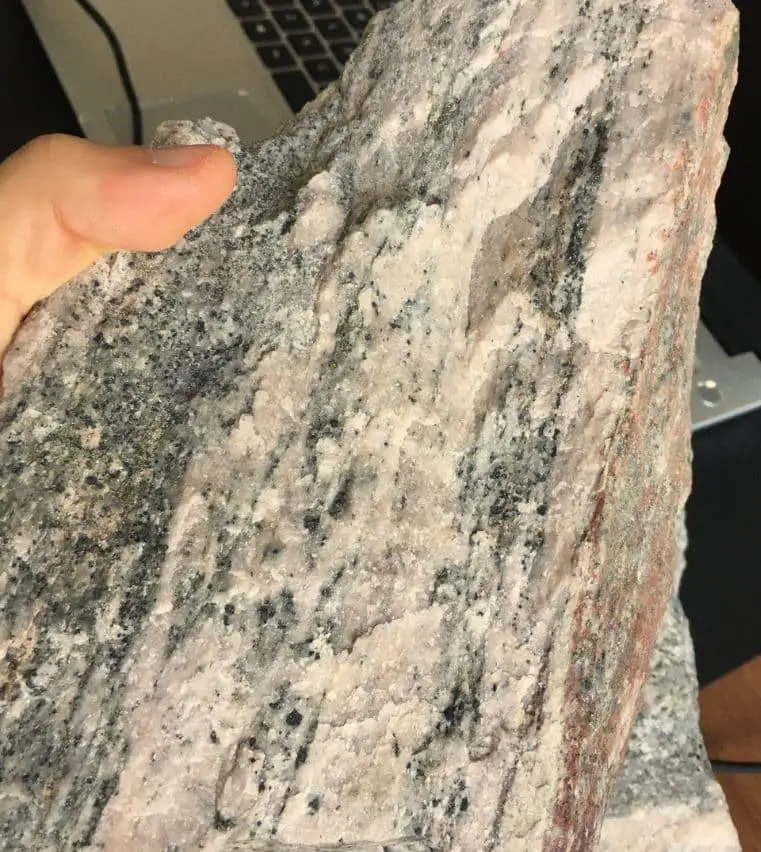
Kimberlite is not the only type of rock that can host valuable mineral deposits. Another rock type that is of great interest to geologists and mining companies is carbonatite. Carbonatite is an igneous rock that is composed primarily of carbonate minerals, such as calcite and dolomite. Carbonatite is known for its unique chemical composition, which sets it apart from other rocks. This rock type is rich in rare earth elements, phosphates, and niobium, making it a valuable source of these minerals.
One of the distinguishing characteristics of carbonatite is its light color and coarse-grained texture. It often appears white or light gray, which is in stark contrast to the dark and dense nature of kimberlite. This difference in appearance can be attributed to the high concentration of carbonate minerals in carbonatite. The coarse-grained texture of carbonatite is a result of its slow cooling process deep within the Earth’s mantle.
Carbonatite is formed through a unique process that involves the crystallization of carbonate-rich magma. This magma is typically generated in the Earth’s mantle and rises to the surface through volcanic activity. As the magma cools and solidifies, it forms carbonatite intrusions or volcanic deposits. These intrusions can vary in size from small veins to large complexes spanning several kilometers.
The economic significance of carbonatite lies in its mineral content. As mentioned earlier, carbonatite is rich in rare earth elements, phosphates, and niobium. Rare earth elements are critical components in the production of high-tech devices, such as smartphones and electric vehicles. Phosphates are essential for agricultural fertilizers, while niobium is used in the production of steel and superconducting magnets.
Due to its economic importance, carbonatite deposits have been the target of extensive exploration and mining activities. However, the extraction of minerals from carbonatite can be challenging due to its complex mineralogy and the presence of other minerals that may interfere with the recovery process. Nonetheless, advances in mining technologies and growing demand for rare earth elements and other minerals have fueled interest in carbonatite deposits.
Troctolite
In contrast to the rare and exotic carbonatite rocks, troctolite is a more common rock type found in various geological settings. Troctolite is an intrusive igneous rock that primarily consists of plagioclase feldspar and olivine. The name “troctolite” is derived from the Greek word “troctos,” meaning “gnawed,” which describes the texture of this rock due to the jagged appearance of the olivine crystals.
Troctolite is commonly associated with layered intrusions, such as the Bushveld Complex in South Africa and the Stillwater Complex in Montana, USA. These layered intrusions are large bodies of igneous rocks that formed as molten magma solidified and cooled underground. The crystallization of troctolite typically occurs early in the cooling process, resulting in the formation of large plagioclase feldspar crystals surrounded by smaller olivine crystals.
The mineral composition of troctolite can vary, depending on the specific chemical composition of the magma from which it forms. In addition to plagioclase feldspar and olivine, troctolite may contain minor amounts of other minerals, such as pyroxene or spinel. This variation in mineral composition can give troctolite different colors and textures, ranging from light gray to dark green.
Troctolite has several important geological implications. Its presence in layered intrusions provides valuable information about the crystallization and differentiation processes that occur within magma chambers. Troctolite can also serve as an indicator of the depth at which the intrusion formed, as it is typically found in the lower portions of layered intrusions. Additionally, troctolite can be an important source of valuable minerals, such as platinum and palladium, which can be concentrated in sulfide minerals associated with troctolite.
Websterite
Websterite is a mafic intrusive igneous rock that is commonly found in layered intrusions. It is characterized by its dark color, coarse-grained texture, and the presence of pyroxene and plagioclase feldspar minerals. This rock is named after the famous American geologist, Charles Webster, who extensively studied the petrology of layered intrusions.
The formation of websterite is closely associated with the crystallization of mafic magmas within the Earth’s crust. It typically occurs in layered intrusions, which are large bodies of igneous rock that form when magma solidifies in a horizontal or nearly-horizontal orientation. These intrusions are commonly found in areas of tectonic activity, such as rift zones or convergent plate boundaries.
Websterite is composed primarily of two mineral groups: pyroxene and plagioclase feldspar. The pyroxene minerals, such as clinopyroxene and orthopyroxene, give the rock its dark color and provide it with its coarse-grained texture. The plagioclase feldspar minerals, on the other hand, are usually lighter in color and have a more granular texture.
One of the most notable features of websterite is its association with other rocks in layered intrusions. It is often found interlayered with other mafic rocks, such as gabbro and norite, as well as with ultramafic rocks, such as peridotite and pyroxenite. This layering is thought to be the result of different mineral phases crystallizing at different depths within the magma chamber.
Websterite has several important geological implications. Its presence in layered intrusions provides valuable insights into the processes of magma crystallization and differentiation. Additionally, the mineral assemblages found in websterite can be used to infer the temperature and pressure conditions under which the rock formed. By studying websterite and other rocks in layered intrusions, geologists can gain a better understanding of the Earth’s interior processes and the formation of igneous rocks.
In conclusion, ultrabasic igneous rocks are an important group of rocks that have unique characteristics and compositions. They are primarily composed of minerals such as olivine, pyroxene, and sometimes amphibole. These rocks have a low silica content and are rich in magnesium and iron.
These rocks are typically found in areas of the earth’s mantle that have undergone extensive melting and crystallization. They are often associated with areas of tectonic activity, such as mid-ocean ridges or volcanic hotspots. Ultrabasic igneous rocks are also important in the formation of certain types of ore deposits, such as those containing platinum group elements or nickel.
